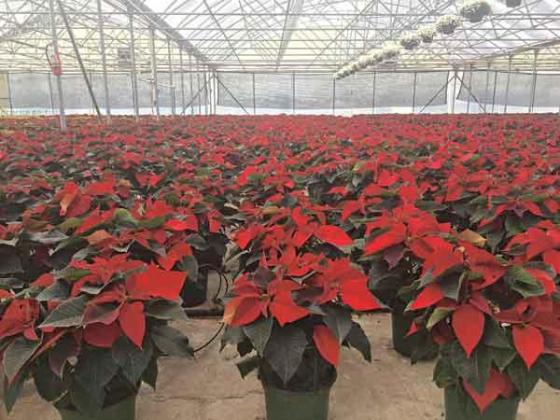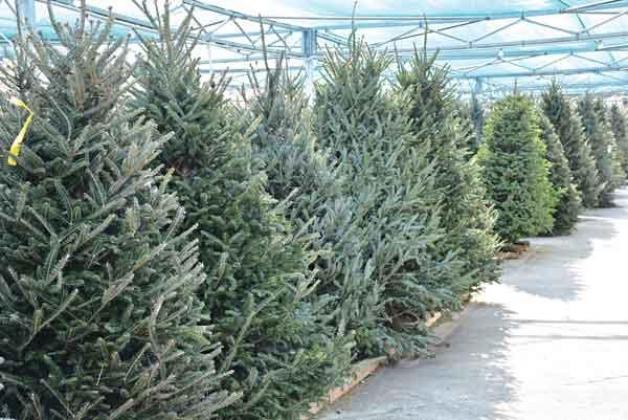

Heather Kirk-Ballard /LSU AgCenter horticulturist
Christmastime conjures thoughts of red, white and green. And many types of beautiful plant materials are available to work with this time of year to spruce up and decorate your home for the season. Here is the short list: Christmas trees, Christmas cactus, colorful poinsettias, mistletoe, red berries and evergreen materials.
Evergreen materials such as holly, pine, fir, spruce, boxwood, magnolia and arborvitae in addition to herbs are available just outside your door in the natural landscape and can all be used to create swags, wreaths and garland for the holiday season.
Christmas trees, poinsettias and Christmas cactuses are readily available this time of year and are perhaps the most commonly used plant materials for the season. All three have a history on how they came to this country in this most wonderful time of the year.
To begin with, many of our traditions surround the winter solstice that falls on the shortest day and longest night of the year on Dec. 21 or 22 in the northern hemisphere.
Our lives and the planet literally revolve around the sun, and ancient cultures such as the Egyptians, Vikings, Celts and Romans once worshipped it. The winter solstice was celebrated every year because it meant that at last the sun god would begin to get well.
According to writers for history, Egyptians worshipped the sun god Ra, and during the winter solstice, they filled their homes with green palm rushes. Scandinavian Vikings also followed a sun god called Balder, decorating with evergreens to symbolize everlasting life. Early Romans celebrated the god of agriculture, Saturn, with the feast of Saturnalia, decorating their homes with evergreen boughs. And so did the priests of the ancient Celts of Northern Europe, called druids.
The Christmas tree tradition began in Germany with Protestant reformer Martin Luther in the 16th century. Christians brought decorated trees into their homes and lit them with candles to reflect the brilliance of the stars. The Christmas tree tradition came to the United States in the 1830s, first in Pennsylvania with the German settlers. Fun fact: Tannenbaum is a German term referring to the fir tree that was traditionally decorated in lights, tinsel and ornaments.
Since the 1850s, 98% of Christmas trees in the United States have been grown exclusively on farms. Approximately 77 million trees are produced on 1 million acres each year. Those farms are in California, Pennsylvania, North Carolina, Michigan, Oregon, Washington and Wisconsin, and the trees take six to eight years to mature.
Poinsettias, another Christmas favorite, are native to Mexico where Franciscan monks used the plants in their Nativity processions. It was also used to make red and purple dyes for clothing and textiles. Montezuma, the last Aztec emperor, was said to have caravans of poinsettias shipped to the capital city of Teotihuacan.
The plants first arrived in United States in the early 1820s and ‘30s, being shipped by Joel Roberts Poinsett, the first U.S. Ambassador to Mexico. He shipped blooms home to South Carolina and shared them at Christmastime with friends and family. Poinsett was a passionate botanist who kept a greenhouse in South Carolina.
Poinsettias gained popularity in the early 1900s when a grower, Paul Ecke, developed the first poinsettia that could be grown indoors in pots. He sold them on roadsides in Hollywood, California.
Poinsettias have come a long way since the early 1900s. To begin with, there are hundreds of varieties. Breeders have been selecting for shorter, sturdier plants with a wide variety of colors, shapes, bract arrangements and tolerance to low light. In addition, improved growing and cultivation practices have greatly enhanced the industry. Growers use light manipulation, hormones and improved watering systems to push the limits of the plants.
Poinsettias are the most popular plant sold during the Christmas holidays in addition to being the best-selling potted plant in the United States.
Jeff Kuehny, director of the AgCenter Botanic Gardens at Burden, evaluates poinsettia varieties for Burden’s Annual Poinsettia Show and Sale. Each year, he receives cuttings of new varieties from global breeders and then grows the cuttings out for evaluation and research. This year, more than 50 poinsettia varieties were on display at the Botanic Gardens Pavilion on Nov. 28.
